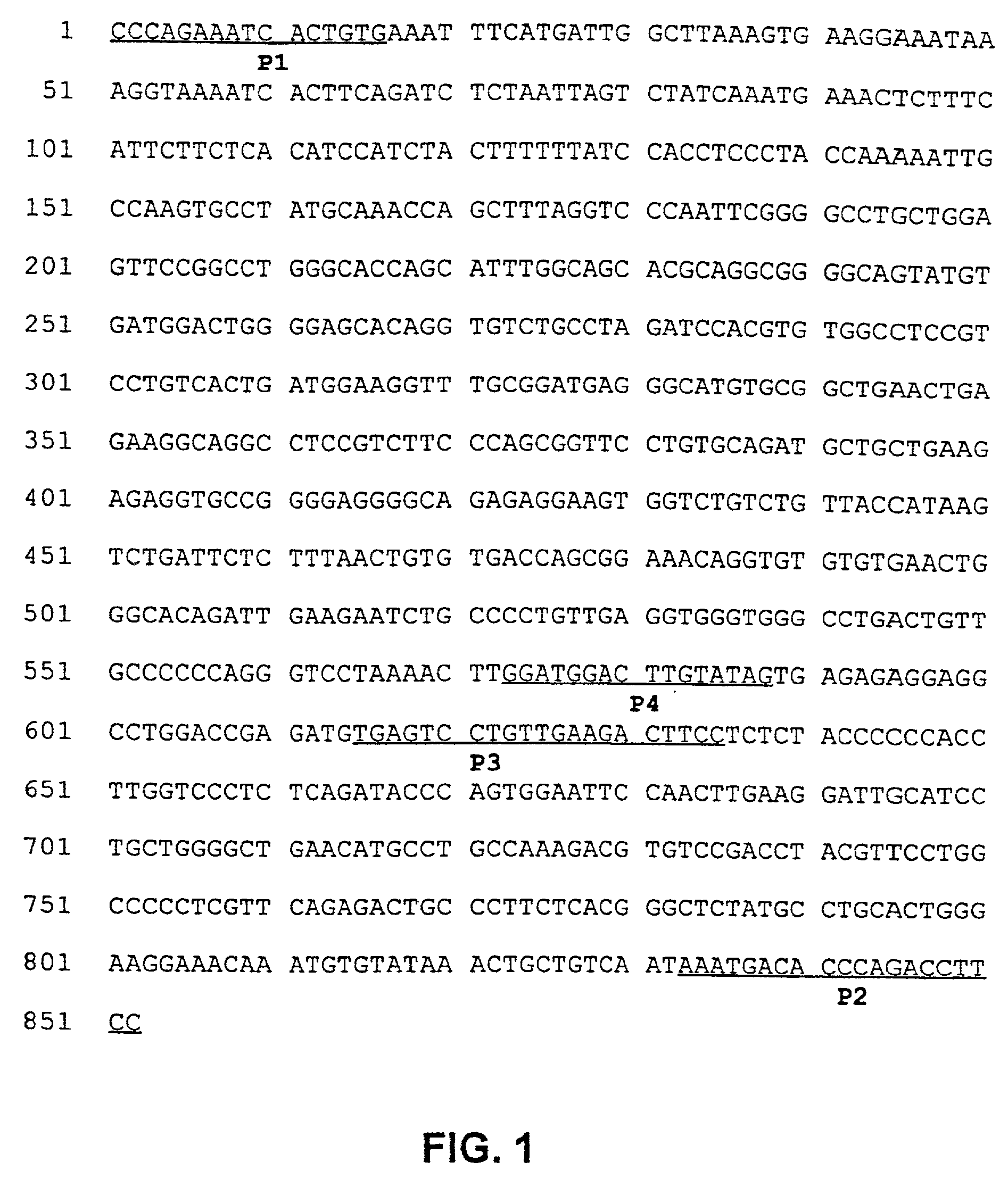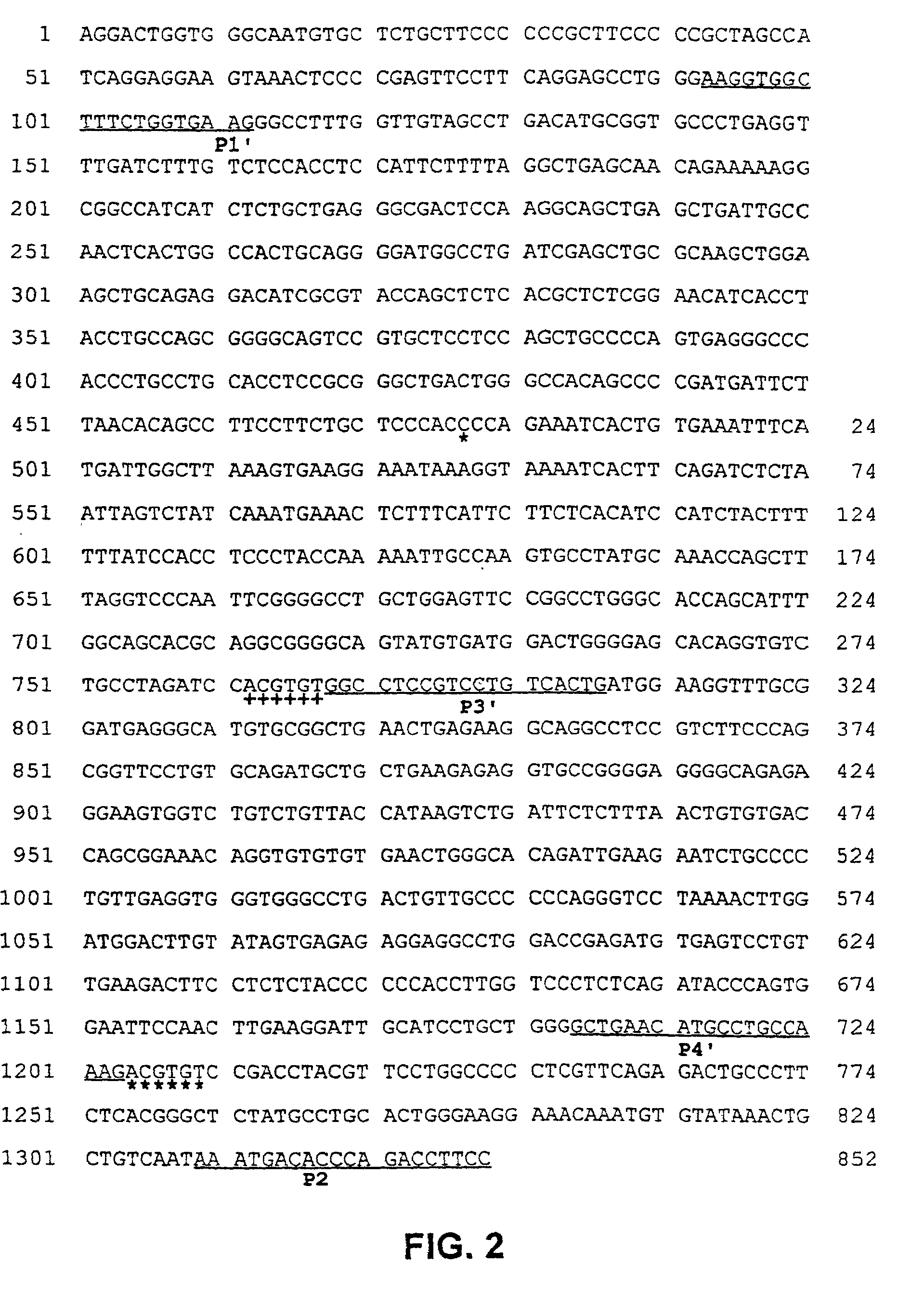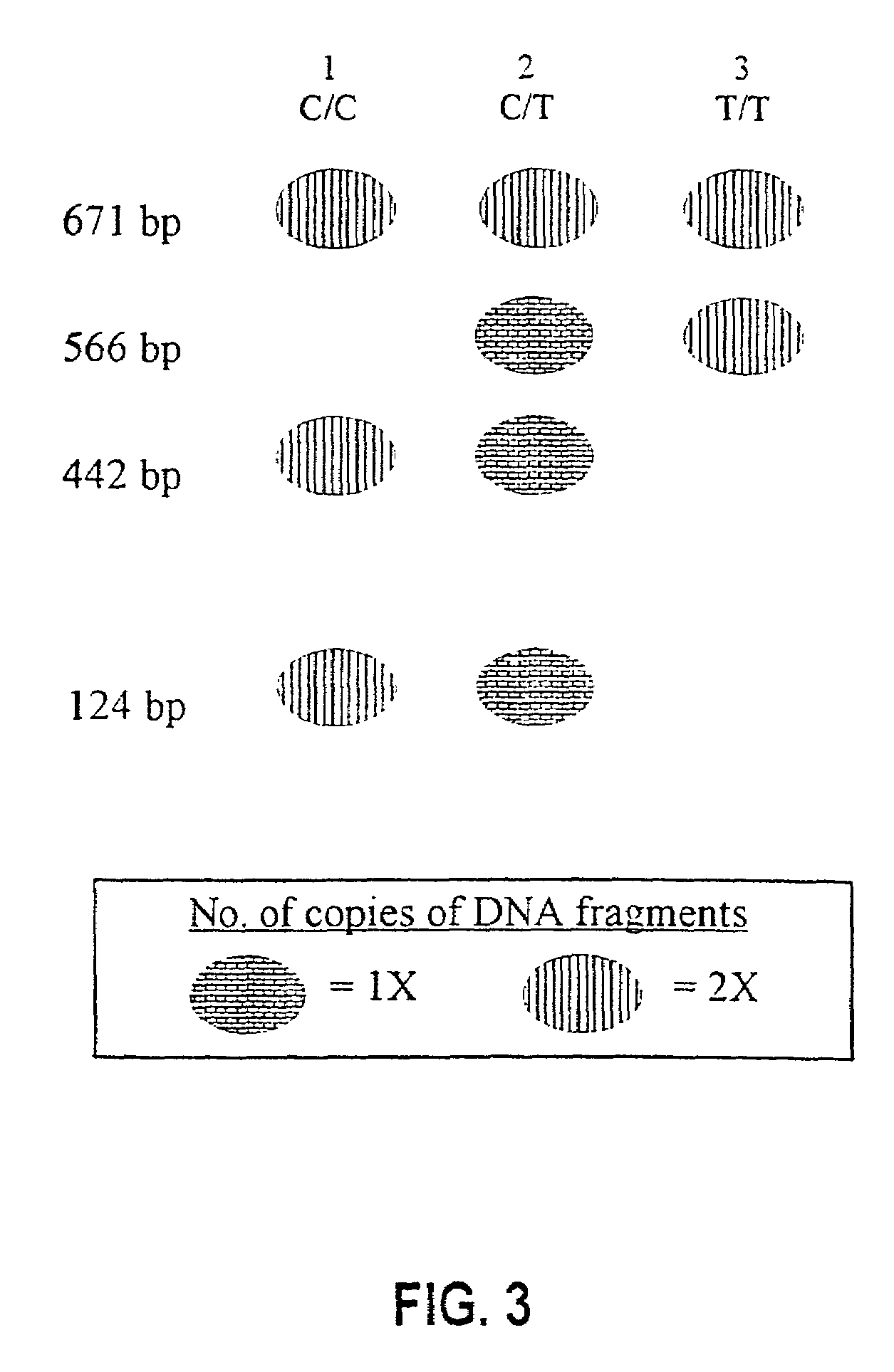Diagnostic assay for cancer susceptibility
a cancer susceptibility and assay technology, applied in the field of diagnostic assays, can solve the problems of many types of cancers remaining undiagnosed, death while remaining undiagnosed, and increased incidence of prostate cancer
- Summary
- Abstract
- Description
- Claims
- Application Information
AI Technical Summary
Benefits of technology
Problems solved by technology
Method used
Image
Examples
example 1
Diagnostic Assay Methodology
[0028]The diagnostic assay for determining susceptibility of cancer based on the sequence of the 3′UTR of the prohibitin gene is described below. The assay is applicable to all types of cancer.
[0029]Blood samples (approx. 10 ml) were collected by routine venipuncture into tubes containing anticoagulant.
[0030]Buccal cell smears were collected using sterile cytology brushes (type H—Histobrush, 174-600; Spectrum Laboratories, Dallas, Tex.). The study participant was instructed to twirl the brush on the inner cheek for 30 seconds on each side. The brush was then inserted into a sterile collection tube, tightly capped, and stored at 4° C. prior to DNA template preparation.
DNA Preparation
[0031]The DNA from blood samples was prepared using the PureGene Kit (Gentra, Minneapolis, Minn.).
[0032]The DNA from buccal cell smears was isolated using a method described by Horrigan, et al., “Polymerase chain reaction-based diagnosis of Del(5q) in acute mye...
example 2
Alternative Diagnostic Assay Method
[0039]An alternative assay was performed as given in Example 1, with the exception that the secondary PCR product was synthesized using the sense primer P4, 5′-GGATGGACTTGTATAG-3′ (SEQ ID NO:8) and the antisense primer 5′-GGAAGGTCTGGGTGTCATTT-3′ (primer P2, antisense)(SEQ ID NO:2).
example 3
Alternative Diagnostic Assay Method
[0040]An alternative assay was performed as given in Example 1, with the exception that, as illustrated in the 1237 bp genomic sequence given in FIG. 2 and SEQ ID NO:9, the primers utilized were 5′-AAGGTGGCTTTCTGGTGAAG-3′ (primer P1′, sense) (SEQ ID NO:3) and 5′-GGAAGGTCTGGGTGTCATTT-3′ (primer P2, antisense)(SEQ ID NO:2). In this assay using SEQ ID NO:9, the base at position 1205 corresponds to the position 729 in SEQ ID NO:1.
[0041]FIG. 3 illustrates the pattern of bands produced in this assay for each genotype. Utilizing the sense primer SEQ ID NO:3 and antisense primer SEQ ID NO:2, the RFLP pattern for a homozygous C individual (C / C) shows that for both DNA strands, the 566 bp measured from the constitutive AflIII site to the end of the 3′UTR was cut at position 729 / 1205 into two distinct bands of 442 bp and 124 bp. A homozygous T individual (T / T) produced one band of 566 bp measured from the constitutive AflIII site to the end of the 3′UTR which...
PUM
| Property | Measurement | Unit |
|---|---|---|
| temperature | aaaaa | aaaaa |
| lifetime risk | aaaaa | aaaaa |
| restriction fragment length polymorphism | aaaaa | aaaaa |
Abstract
Description
Claims
Application Information
 Login to View More
Login to View More - R&D
- Intellectual Property
- Life Sciences
- Materials
- Tech Scout
- Unparalleled Data Quality
- Higher Quality Content
- 60% Fewer Hallucinations
Browse by: Latest US Patents, China's latest patents, Technical Efficacy Thesaurus, Application Domain, Technology Topic, Popular Technical Reports.
© 2025 PatSnap. All rights reserved.Legal|Privacy policy|Modern Slavery Act Transparency Statement|Sitemap|About US| Contact US: help@patsnap.com



